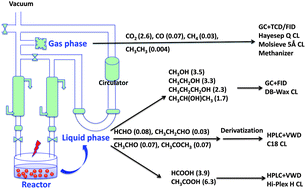
Analysis of gas and liquid phase photoreduction products
Carbon dioxide produced by combustion of fossil fuels can potentially be removed from the atmosphere using an abundant carbon-neutral form of energy: sunlight. Photocatalytic reduction is a promising strategy for CO2 conversion, but controlling the reaction pathways can be difficult. Identification and isolation of the range of reduction products provides a way of evaluating the efficiency of different photocatalysts.
In this minireview, Rong Xu and researchers at the Nanyang Technological University examine different analytical methods for these conversion products. They compare a range of GC, HPLC and other chromatographic systems for separation of compounds including alcohols, aldehydes, carboxylic acids and small hydrocarbons. Moreover, they apply their findings to a new set of techniques for accurate detection of CO2 reduction products with low detection limits, employing a combination of GC and HPLC.
In a useful addition to the study, the authors also investigated the effects of organic additives such as solvents and photosensitisers on these analytical methods.
Photocatalytic reduction of CO2: a brief review on product analysis and systematic methods
Jindui Hong, Wei Zhang, Jia Ren and Rong Xu
Anal. Methods, 2013,5, 1086-1097
DOI: 10.1039/C2AY26270C










